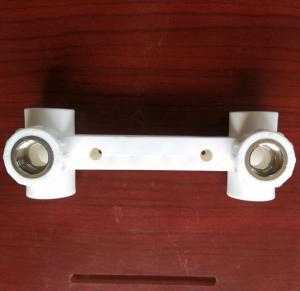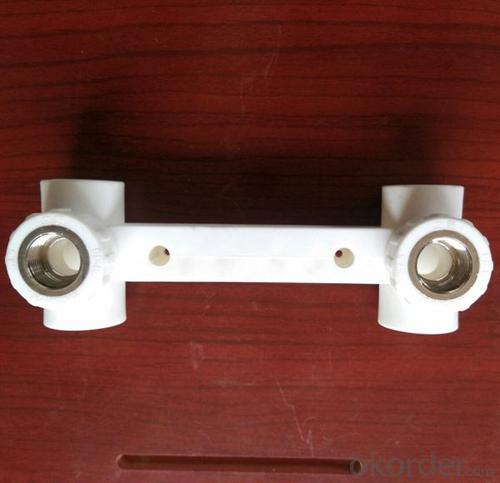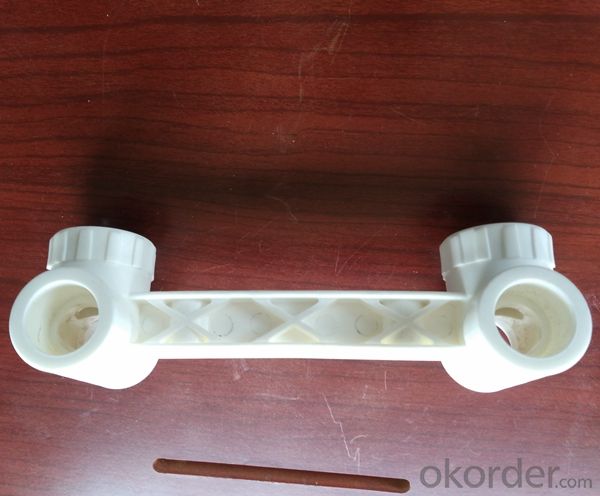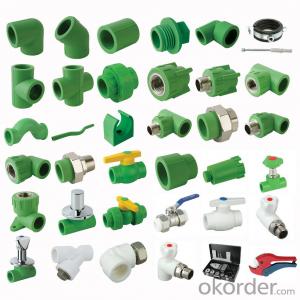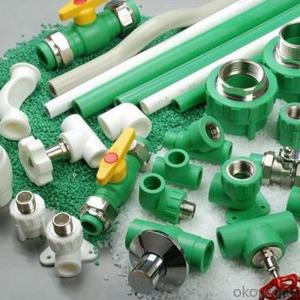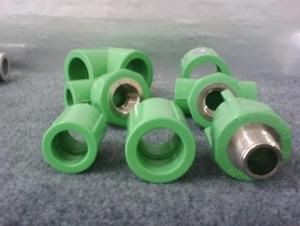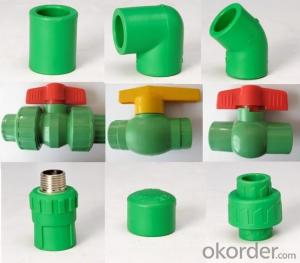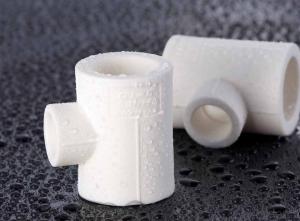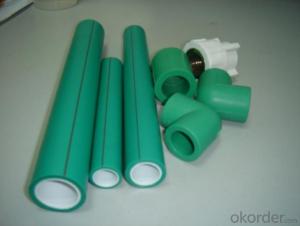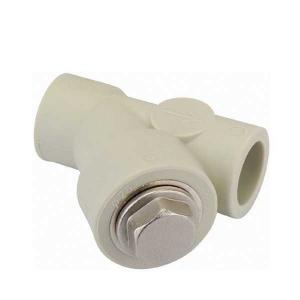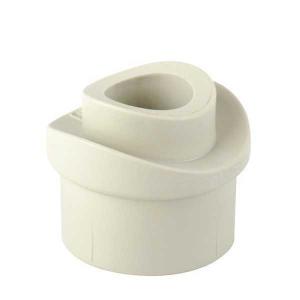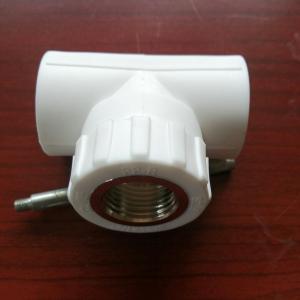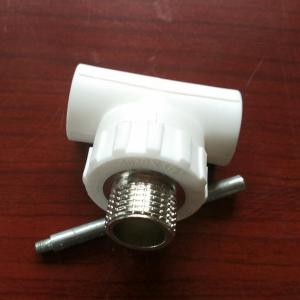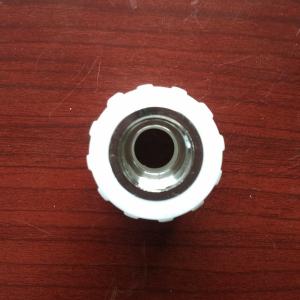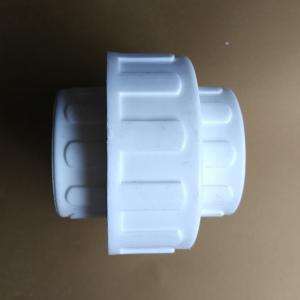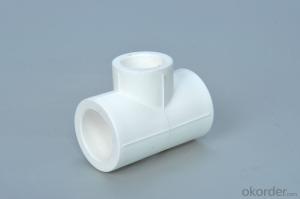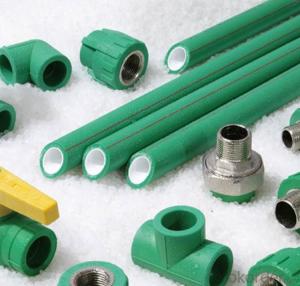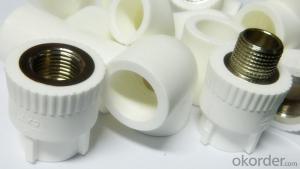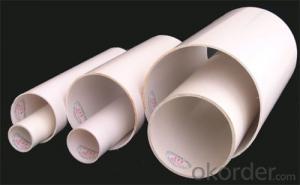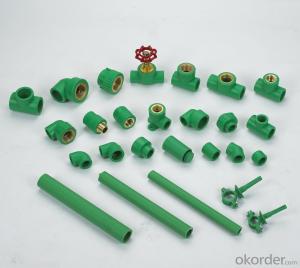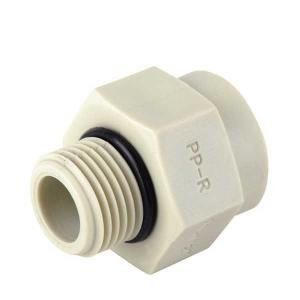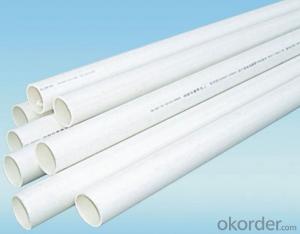Custom Plastic Pipe Fittings - Union Female Tee PPR Plastic Pipe Fitting for Civil and Agricultural Construction
- Loading Port:
- Ningbo
- Payment Terms:
- TT or LC
- Min Order Qty:
- 3000 pc
- Supply Capability:
- 100000 pc/month
OKorder Service Pledge
OKorder Financial Service
You Might Also Like
Union Female Tee
Mainly used to connect civil construction, industrial, agricultural and landscape irrigation drainage system PE pipes
Main Features of Union Female Tee
1, health, non-toxic: the various parts of the pipeline system consists of PP-R pipes and fittings constituted can be completely non-toxic, health indicators in line with GB / T17219 standards.
2, does not rust: PH value can withstand a wide temperature range, in the range of 1 to 14, a high concentration of acid and alkali corrosion.
3, wear-resistant, non-fouling: PP-R pipe and tube inner wall smooth, uniform flow resistance is small and does not scale.
4, reducing vibration and noise: PP-R pipe has excellent insulation properties, can significantly reduce the vibration and noise caused by the flow of liquid.
5, anti-cracking: PP-R materials excellent elasticity makes pipes and fittings sectionally With frost expansion of the liquid together without bursting.
6, anti-condensation, heat loss is small: PP-R material is a poor thermal conductor, reduces condensation and reduce heat loss less.
7, anti-electric corrosion: PP-R material is a poor conductor of electricity can avoid corrosion. Complete specifications: 10-30 optional
Pictures of Union Female Tee
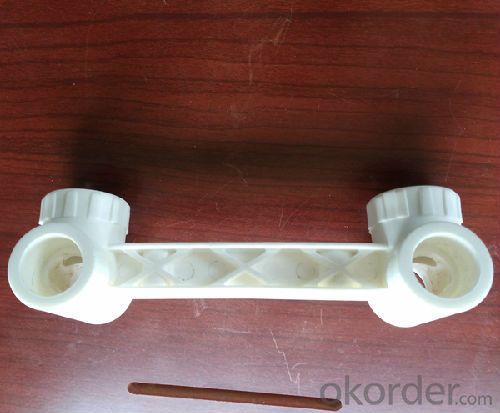
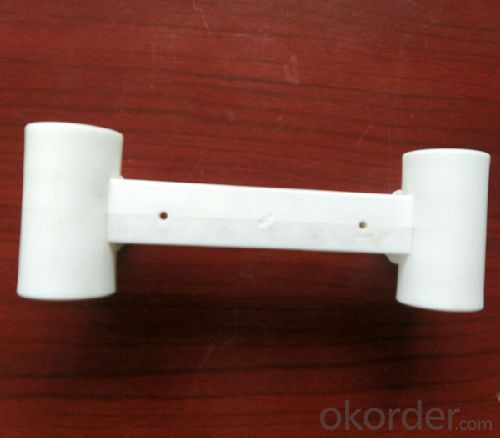
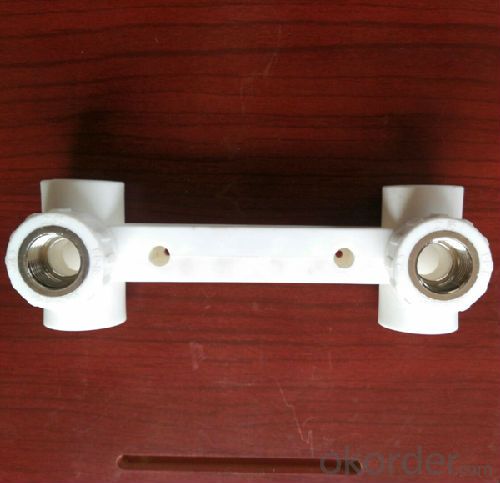
- Q: Are plastic pipe fittings resistant to scaling and buildup?
- Yes, plastic pipe fittings are generally resistant to scaling and buildup.
- Q: What are the common connecting methods for plastic PP pipes?
- The electric wire welding method: the oxidation of the tube surface skin removed, insert pipe specifications corresponding with the electric heating element, the heating element to the rated current through a certain period of time, polypropylene pipe fittings and pipe joints to heat and melt each other, turn off the power, thus forming an inseparable interface. The butt welding of the pipe end treatment method: first, with the heating plate placed on well tube and tube or pipe and pipe fittings, set the heating temperature, close the control power, heating, pumping out the heating piece, and then ends by force rapid docking together to form a high cooling. The strength of trapezoidal interface, its interface strength and bulk material. Flexible flange connection method: in the plastic flange place steel looper flange, and then put the appropriate gasket, string into the specified bolt, tighten it.
- Q: Antistatic flame retardant PE plastic pipe installation, what should pay attention to?
- When installing the pipe, the distance between the two socket flexible connections shall be no more than 3 meters. When the length compensation is needed, the pipe can be completely inserted into the socket and then out of the 10mm. Flexible connections between pipes and fittings can absorb thermal expansion of pipes up to 10mm.
- Q: How do you remove a plastic pipe fitting?
- To remove a plastic pipe fitting, you can follow these steps: 1. Turn off the water supply: Before removing any pipe fitting, it is essential to turn off the water supply to prevent any leaks or accidents. 2. Prepare the area: Clear the surrounding area of any obstructions or debris that may hinder your work. 3. Identify the type of fitting: Determine the type of plastic fitting you are dealing with. Common types include compression fittings, push-to-connect fittings, or threaded fittings. 4. Compression fittings: For compression fittings, you will need two adjustable wrenches. Use one wrench to hold the fitting in place while using the other wrench to turn the nut counterclockwise until it comes off. 5. Push-to-connect fittings: Push-to-connect fittings typically have a release mechanism built into them. Locate the release collar near the fitting, then push it down firmly towards the pipe while pulling the pipe away from the fitting. This will release the connection. 6. Threaded fittings: Threaded fittings require the use of a pipe wrench or adjustable wrench. Place the wrench on the fitting's body or hex section and turn it counterclockwise to loosen and remove the fitting. 7. Inspect and clean: Once the fitting is removed, inspect the pipe and fitting for any damage or debris. Clean the pipe end and the inside of the fitting to ensure a proper connection when reinstalling it or replacing it with a new fitting. Remember to exercise caution and follow safety guidelines when working with plumbing systems. If you are unsure or encounter any difficulties, it is advisable to consult a professional plumber.
- Q: Can plastic pipe fittings be used for pneumatic conveying systems?
- Yes, plastic pipe fittings can be used for pneumatic conveying systems. Plastic pipe fittings, such as PVC or HDPE, are commonly used in pneumatic conveying systems due to their lightweight, corrosion resistance, and cost-effectiveness. They provide a reliable and durable solution for conveying materials in pneumatic systems. However, it is important to select fittings that are specifically designed for pneumatic conveying applications and ensure they can handle the required pressure and flow rates.
- Q: Are plastic pipe fittings suitable for use in agricultural applications?
- Yes, plastic pipe fittings are suitable for use in agricultural applications. They offer a range of benefits such as corrosion resistance, durability, and affordability. Plastic fittings can effectively handle the demands of agricultural systems, including irrigation, water supply, and drainage, making them a popular choice in the industry.
- Q: Are plastic pipe fittings suitable for irrigation systems?
- Yes, plastic pipe fittings are suitable for irrigation systems. They are durable, lightweight, and resistant to corrosion and chemicals commonly found in irrigation water. Additionally, plastic pipe fittings are easy to install and maintain, making them a popular choice for irrigation systems.
- Q: Can plastic pipe fittings be used in sewage treatment systems?
- Yes, plastic pipe fittings can be used in sewage treatment systems. They are commonly used due to their durability, resistance to corrosion, and ease of installation. Additionally, plastic pipe fittings are often more cost-effective than other materials and can withstand the harsh chemicals and conditions found in sewage treatment systems.
- Q: Do plastic pipe fittings expand and contract with temperature changes?
- Yes, plastic pipe fittings do expand and contract with temperature changes.
- Q: Can plastic pipe fittings be used for chemical dosing in water treatment?
- Yes, plastic pipe fittings can be used for chemical dosing in water treatment. Plastic fittings are often preferred due to their corrosion resistance, durability, and cost-effectiveness. However, it is crucial to select fittings that are compatible with the specific chemicals being dosed to ensure safe and effective water treatment processes.
Send your message to us
Custom Plastic Pipe Fittings - Union Female Tee PPR Plastic Pipe Fitting for Civil and Agricultural Construction
- Loading Port:
- Ningbo
- Payment Terms:
- TT or LC
- Min Order Qty:
- 3000 pc
- Supply Capability:
- 100000 pc/month
OKorder Service Pledge
OKorder Financial Service
Similar products
Hot products
Hot Searches
Related keywords
